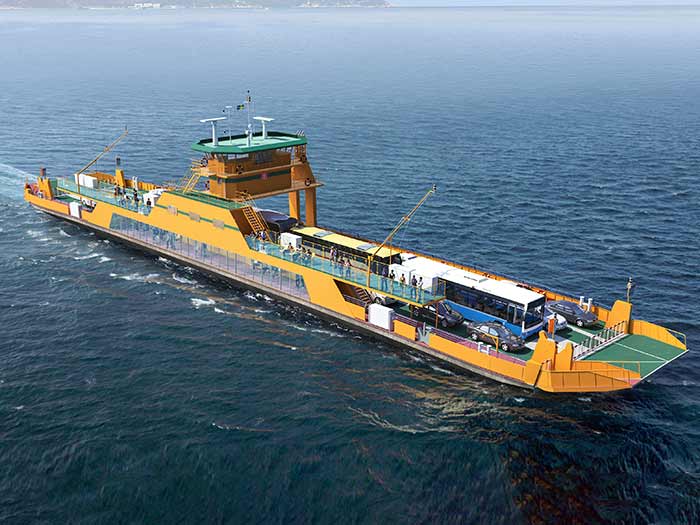
The autonomous ferries will operate in the Stockholm archipelago [Image ©Trafikverket]
Making what it says is its ferry operation’s biggest investment ever, the Swedish Transport Administration (Trafikverket Sweden) has awarded Hardinxveld–Giessendam, Netherlands, based Holland Shipyards a contract for up to four hybrid-electric car/passenger ferries with autonomous capabilities.
The initial award is for two 60 meters long by 14.24 meter wide ferries, each with a 60-car carrying capacity, along with four automooring facilities, two charging stations, a simulator facility and a remote control center. The entire procurement will include two additional ferriesand four more automooring facilities and charging stations, bringing its total value to SEK 1 billion (approaching $90 million at today’s exchange rate).
The investment in the autonomous ferries is part of Trafikverket’s Vision 45 plan for a climate-neutral ferry service by 2045.
The vessels will operate in the Stockholm archipelago. They will primarily run on electricity but will have backup engines that run on HVO, an environmentally friendly diesel substitute.
They will have IMO level 2 autonomy, meaning that they are remotely operated and monitored, but do have crew on board that can take control whenever necessary.
“The technology works as a support for the staff. The technical system increases security and does what computers do best – learns to repeat the same action pattern. In this way, the most environmentally friendly operation is found,” says Erik Froste, Trafikverket’s shipping manager.
Crossing the ferry route can be done with just the push of a button. While moored, the vessels are being charged by a shore charging facility, taking approximately four minutes.
The implementation of autonomous sailing technology is intended to increase passenger safety in the long run. When a fully operational system is in place, situations can be dealt with in an entirely consistent manner, reducing the risk for “unexpected” actions, says Holland Shipyards.
Reducing the dependency on crew on board requires that many systems are remotely operable and are redundant, so that, when one way of operation fails, another route remains available. This means that the level of inputs and outputs into the ship’s Integrated Automations System (IAS) will be large. The IAS in turn will be mirrored in a remote control center, allowing on-shore monitoring personnel full access to all the ship’s vital functionalities.
Reducing the dependency on crew on board requires that many systems are remotely operable and are redundant, so that, when one way of operation fails, another route remains available. This means that the level of inputs and outputs into the ship’s Integrated Automations System (IAS) will be large. The IAS in turn will be mirrored in a remote control center, allowing on-shore monitoring personnel full access to all the ship’s vital functionalities.
The first autonomous ferry is scheduled to be delivered in the second half of 2024 and the other ferries will arrive in constant intervals after the first.
Source: marinelog.com


Can you be more specific about the content of your article? After reading it, I still have some doubts. Hope you can help me.
Thank you for your sharing. I am worried that I lack creative ideas. It is your article that makes me full of hope. Thank you. But, I have a question, can you help me?
I don’t think the title of your article matches the content lol. Just kidding, mainly because I had some doubts after reading the article.